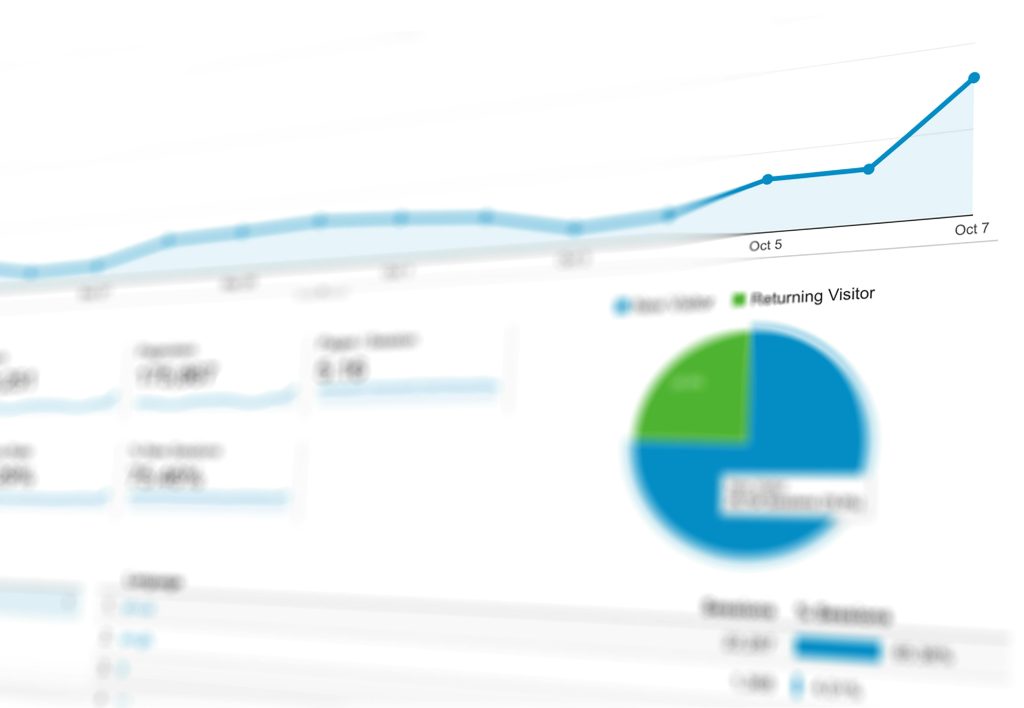Performance metrics are crucial tools for businesses to assess and evaluate their progress in achieving goals and objectives. These metrics offer valuable insights into various aspects of a company’s performance, including financial health, operational efficiency, customer satisfaction levels, employee engagement rates, quality standards, and productivity measures. By monitoring and analyzing these metrics, organizations can identify areas requiring improvement, make data-driven decisions, and foster continuous growth and success.
Performance metrics can be presented in various formats, such as key performance indicators (KPIs), ratios, benchmarks, and other quantitative and qualitative measures. They are utilized to evaluate the effectiveness and efficiency of business processes, recognize trends and patterns, and track progress towards strategic objectives. In today’s competitive business landscape, performance metrics play a vital role in helping companies remain agile, responsive, and competitive.
This article will examine different types of performance metrics and their importance in driving organizational success.
Key Takeaways
- Performance metrics are essential for evaluating the success of a business and identifying areas for improvement.
- Financial performance metrics, such as revenue growth and profit margin, provide insight into the financial health of a company.
- Operational performance metrics, such as production efficiency and inventory turnover, help measure the effectiveness of business operations.
- Customer satisfaction metrics, such as Net Promoter Score and customer retention rate, gauge the satisfaction and loyalty of customers.
- Employee engagement metrics, such as employee turnover rate and job satisfaction, assess the level of commitment and satisfaction among employees.
- Quality and productivity metrics, such as defect rate and output per employee, measure the efficiency and effectiveness of production processes.
- Key performance indicators (KPIs) for leadership, such as strategic goal achievement and employee development, help assess the overall performance and effectiveness of leadership within an organization.
Financial Performance Metrics
Revenue Growth and Profit Margin
Revenue growth is a key financial metric that measures the increase in a company’s sales over a specific period. It indicates the company’s ability to generate more revenue and expand its customer base. Profit margin, on the other hand, measures the percentage of revenue that translates into profit after accounting for all expenses. It reflects the company’s efficiency in managing costs and generating profits.
Return on Investment (ROI) and Cash Flow
Return on investment (ROI) is a critical financial metric that assesses the profitability of an investment relative to its cost. It helps businesses evaluate the success of their investments and make informed decisions about future investments. Cash flow metrics, such as operating cash flow and free cash flow, provide insights into the company’s ability to generate cash from its operations and fund its ongoing activities and investments.
Debt-to-Equity Ratio and Financial Strength
Lastly, the debt-to-equity ratio measures the company’s leverage and financial risk by comparing its debt to its equity. These financial performance metrics are essential for investors, creditors, and management to assess the company’s financial strength and make strategic decisions.
Operational Performance Metrics
Operational performance metrics focus on evaluating the efficiency and effectiveness of a company’s operational processes and activities. These metrics help businesses identify opportunities for improvement, streamline operations, and enhance overall productivity. Common operational performance metrics include cycle time, lead time, throughput, capacity utilization, and inventory turnover.
Cycle time measures the total time it takes to complete a specific process or task, from start to finish. It helps businesses identify bottlenecks and inefficiencies in their operations and implement strategies to reduce cycle times and improve productivity. Lead time, on the other hand, measures the time it takes to fulfill a customer order from the moment it is placed to the moment it is delivered.
It is a critical metric for assessing customer satisfaction and optimizing order fulfillment processes. Throughput is a measure of the rate at which a system or process can produce output within a given period. It helps businesses assess their production capacity and identify opportunities to increase output and efficiency.
Capacity utilization measures the extent to which a company’s production capacity is being used to meet demand. It helps businesses optimize resource allocation and maximize operational efficiency. Lastly, inventory turnover measures how quickly a company sells its inventory within a specific period.
It reflects the company’s ability to manage inventory levels effectively and generate sales.
Customer Satisfaction Metrics
Customer satisfaction metrics are crucial for businesses to understand and measure how satisfied their customers are with their products or services. These metrics provide insights into customer preferences, expectations, and overall experience with the company. Common customer satisfaction metrics include Net Promoter Score (NPS), customer satisfaction score (CSAT), customer retention rate, and customer lifetime value.
Net Promoter Score (NPS) is a widely used customer satisfaction metric that measures the likelihood of customers to recommend a company’s products or services to others. It helps businesses gauge customer loyalty and advocacy and identify areas for improvement. Customer satisfaction score (CSAT) measures customers’ satisfaction with a specific interaction or experience with the company.
It provides valuable feedback on the quality of customer service and overall satisfaction levels. Customer retention rate measures the percentage of customers who continue to do business with the company over time. It reflects the company’s ability to retain customers and build long-term relationships.
Customer lifetime value (CLV) is a metric that calculates the total value a customer brings to a company over their entire relationship. It helps businesses understand the long-term impact of acquiring and retaining customers.
Employee Engagement Metrics
Employee engagement metrics are used to measure the level of commitment, motivation, and satisfaction of employees within an organization. These metrics provide insights into employee morale, productivity, and overall organizational culture. Common employee engagement metrics include employee satisfaction surveys, turnover rate, absenteeism rate, and employee net promoter score (eNPS).
Employee satisfaction surveys are a valuable tool for gathering feedback from employees about their job satisfaction, work environment, and overall experience with the company. These surveys help businesses identify areas for improvement and implement strategies to enhance employee engagement. Turnover rate measures the percentage of employees who leave the company within a specific period.
It reflects the company’s ability to retain talent and maintain a stable workforce. Absenteeism rate measures the frequency of employee absences from work within a specific period. It provides insights into employee motivation, job satisfaction, and overall well-being.
Employee net promoter score (eNPS) measures employees’ likelihood to recommend their company as a place to work. It helps businesses assess employee loyalty and advocacy within the organization.
Quality and Productivity Metrics
Defect Rate and First-Pass Yield
Defect rate measures the percentage of defective products or services within a specific production or service delivery process. It helps businesses identify quality issues and implement corrective actions to improve product or service quality. First-pass yield measures the percentage of products or services that meet quality standards on the first attempt. It reflects the efficiency of production processes and the level of rework required.
Customer Complaints
Customer complaints measure the number of complaints received from customers about product or service quality or performance. It provides valuable feedback on areas for improvement and helps businesses address customer concerns proactively.
Output per Labor Hour
Output per labor hour measures the amount of output produced by each hour of labor input. It helps businesses assess labor productivity and identify opportunities to increase efficiency.
Key Performance Indicators (KPIs) for Leadership
Key performance indicators (KPIs) for leadership are critical for assessing the effectiveness of organizational leadership in driving strategic goals and objectives. These KPIs help businesses evaluate leadership performance, decision-making, communication, and overall impact on organizational success. Common KPIs for leadership include employee engagement levels, strategic goal achievement, leadership effectiveness score, and organizational culture alignment.
Employee engagement levels measure the level of commitment, motivation, and satisfaction of employees within an organization. It reflects the effectiveness of leadership in creating a positive work environment and driving employee engagement. Strategic goal achievement measures the extent to which organizational leaders are able to achieve strategic objectives within specific timeframes.
It provides insights into leadership effectiveness in setting direction and driving results. Leadership effectiveness score assesses leadership performance based on feedback from employees, peers, and stakeholders. It helps businesses identify areas for leadership development and improvement.
Organizational culture alignment measures the extent to which leadership behaviors align with organizational values, mission, and culture. It reflects leadership’s ability to foster a positive organizational culture that drives performance and success. In conclusion, performance metrics are essential tools for businesses to measure and evaluate their success in achieving their goals and objectives across various aspects of their operations.
Financial performance metrics provide insights into a company’s financial health and profitability, while operational performance metrics focus on evaluating the efficiency and effectiveness of operational processes. Customer satisfaction metrics help businesses understand how satisfied their customers are with their products or services, while employee engagement metrics measure the level of commitment, motivation, and satisfaction of employees within an organization. Quality and productivity metrics are essential for assessing product or service quality and measuring efficiency in delivering value to customers.
Lastly, key performance indicators (KPIs) for leadership are critical for assessing the effectiveness of organizational leadership in driving strategic goals and objectives.
FAQs
What are performance metrics?
Performance metrics are quantifiable measures used to track and assess the performance of an individual, team, department, or organization. These metrics are used to evaluate progress, identify areas for improvement, and make informed decisions.
Why are performance metrics important for leaders?
Performance metrics are important for leaders because they provide valuable insights into the effectiveness and efficiency of their teams and organizations. By tracking performance metrics, leaders can make data-driven decisions, set realistic goals, and monitor progress towards achieving those goals.
What are some examples of performance metrics that leaders should track?
Some examples of performance metrics that leaders should track include:
– Financial metrics such as revenue, profit margins, and return on investment
– Customer satisfaction metrics such as Net Promoter Score (NPS) and customer retention rate
– Employee performance metrics such as productivity, engagement, and turnover rate
– Operational metrics such as cycle time, quality defects, and inventory turnover
How can leaders use performance metrics to drive improvement?
Leaders can use performance metrics to drive improvement by:
– Identifying areas of underperformance and implementing targeted improvement initiatives
– Setting clear and measurable goals based on performance metrics
– Monitoring progress and making adjustments as needed to ensure continuous improvement
– Using performance metrics to recognize and reward high-performing individuals or teams
What are the potential challenges of tracking performance metrics?
Some potential challenges of tracking performance metrics include:
– Identifying the most relevant and meaningful metrics for the specific goals and objectives of the organization
– Ensuring the accuracy and reliability of the data used to calculate performance metrics
– Avoiding the “metric overload” by focusing on a few key metrics that truly drive performance
– Balancing the quantitative data provided by performance metrics with qualitative insights and feedback from employees and customers



